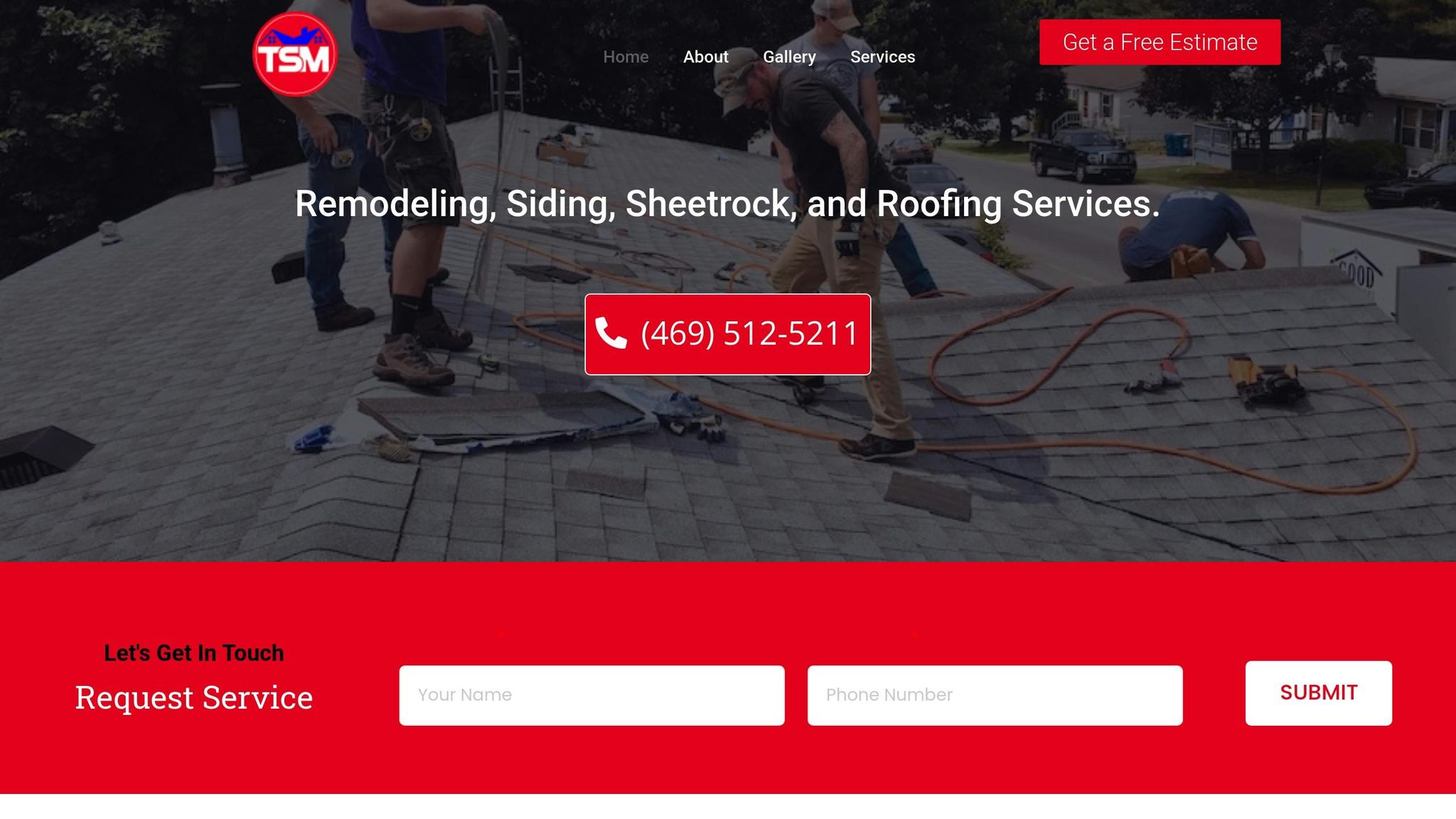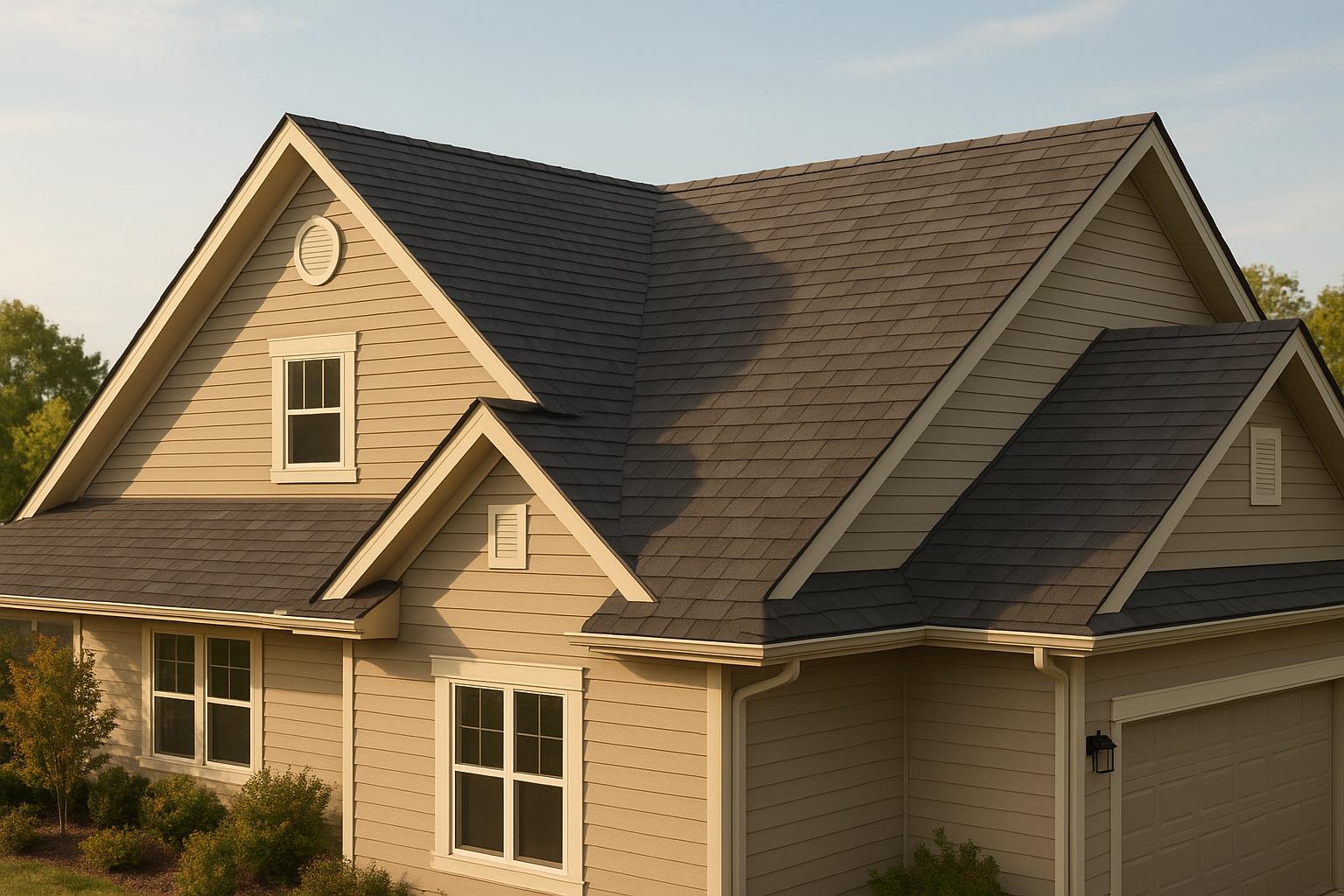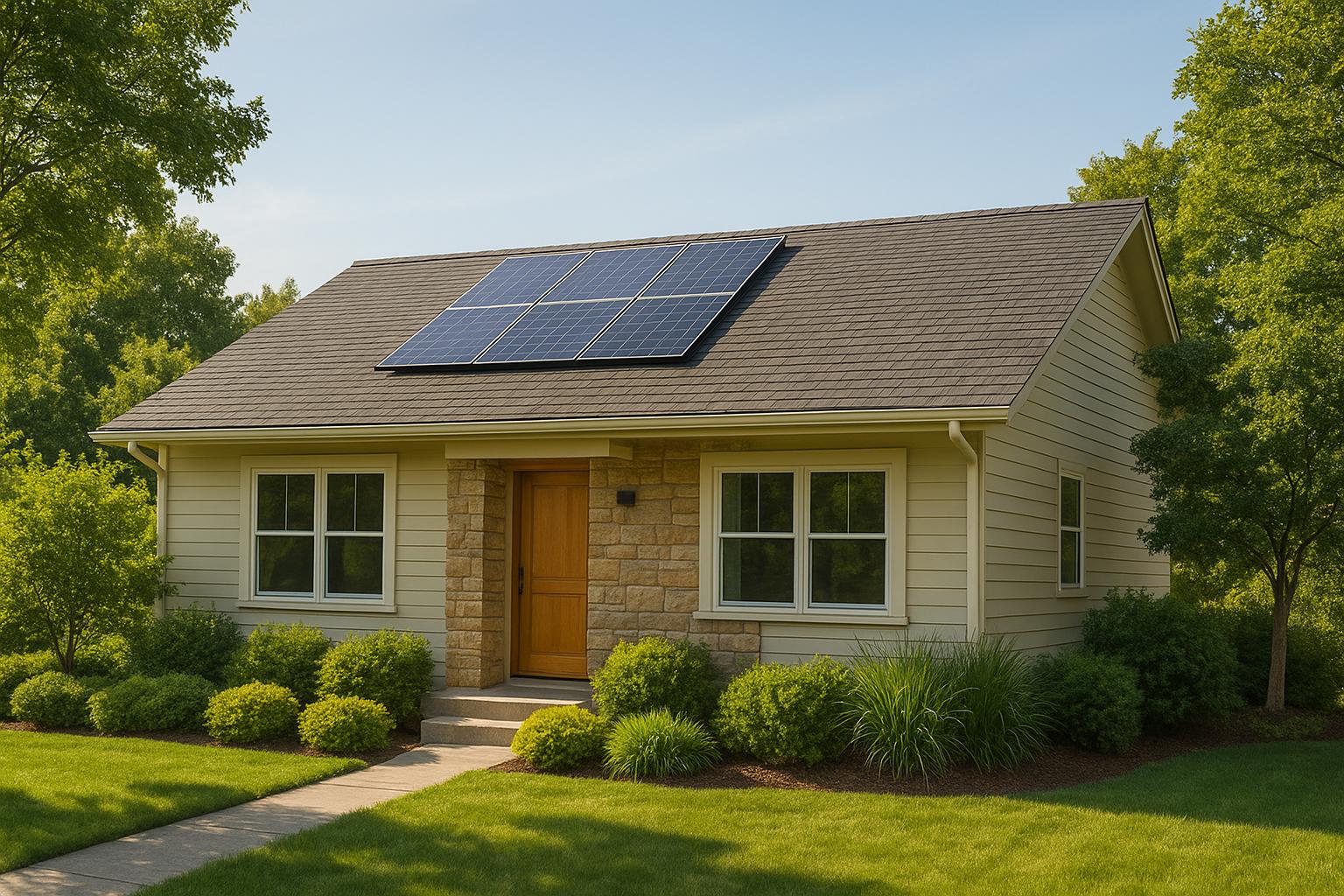Regular roof testing is the key to a longer-lasting, cost-efficient roof. It helps catch problems early, delays expensive replacements, and protects your home from damage like leaks or mold. Here’s what you need to know:
- Why it matters: Roofs made of asphalt shingles typically last 15–30 years. Without regular testing, harsh weather, UV exposure, or poor ventilation can shorten that lifespan.
- What it involves: Professional inspections go beyond visual checks, identifying hidden issues like damaged flashing, missing shingles, or moisture buildup. Costs range from $75 to $675, with some companies offering free inspections.
- Benefits: Studies show regular inspections reduce emergency repairs, extend roof life, and even lower insurance claims. Treatments like GreenSoy Technology can add 6–18 years to your roof's lifespan, cutting costs and reducing waste.
- Testing methods: Techniques include visual checks, moisture detection, thermal scanning, and core sampling. Combining methods ensures thorough assessments.
Bottom line: Regular testing saves money, protects your home, and reduces waste by extending your roof’s life. It’s a smart investment for any homeowner.
How Does an EXPERT Roofer Do a Roof Inspection | TSM Roofing

Recent Studies on Regular Roof Testing Benefits
Recent research highlights how regular roof testing can offer both financial relief and structural protection for homeowners. By taking a proactive approach, homeowners can avoid unexpected expenses and extend the life of their roofs.
Data consistently demonstrates that routine roof inspections bring multiple advantages. These range from extending the lifespan of roofing materials to avoiding costly emergency repairs that can overwhelm budgets. This research also sheds light on the specific factors roof testing evaluates, giving homeowners a clearer picture of its value.
Key Research Results
Studies confirm what many experts have long advocated: regular roof inspections significantly reduce the likelihood of major repairs. According to the National Roofing Contractors Association, homes with routine inspections experience fewer emergency issues compared to those that only address problems as they arise.
One large-scale study, which tracked homes in various climate zones, found that regular roof testing can notably extend a roof's lifespan. This delays the need for replacement, offering substantial savings. Considering how expensive roof replacements can be, even a few extra years of use can make a big difference financially.
Additionally, data from the insurance industry reveals another perk: homes with documented roof inspections often file fewer weather-related claims. In some cases, this can even lead to discounts on insurance premiums.
Factors Tested to Improve Roof Performance
Regular roof testing doesn’t just save money - it also focuses on critical performance indicators that ensure your roof remains durable and effective. Here's a closer look at the key areas these inspections evaluate:
- Granule loss in asphalt shingles: Identifying significant granule loss early allows for targeted treatments that slow down the aging process.
- Shingle flexibility: Testing how shingles respond to temperature changes can reveal brittleness before cracking becomes visible, enabling timely interventions.
- UV exposure damage: Prolonged sunlight can degrade roofing materials. Detecting UV damage early is especially important in sunny regions, where proper interventions can preserve the roof's condition.
- Ventilation efficiency: Poor attic ventilation can lead to excessive heat and moisture buildup, speeding up roof deterioration. Testing ensures ventilation systems are functioning optimally.
- Structural load capacity: Evaluating how well a roof handles snow, debris, or even its own weight helps identify vulnerabilities. Addressing these weak points can prevent severe damage during extreme weather.
Methods for Testing Roof Structural Integrity
Testing roof integrity plays a crucial role in maintaining and extending the life of a roof. Professionals rely on a range of methods, from simple visual checks to cutting-edge technologies, to uncover potential problems and guide maintenance decisions.
Each method has its strengths and is suited to specific roof types or issues. By choosing the right approach, homeowners and professionals can address concerns early, often avoiding costly repairs down the line. Below, we’ll explore these techniques and their pros and cons.
Overview of Testing Techniques
Visual inspections are the starting point for most roof evaluations. They help identify obvious issues like missing shingles, exposed nails, or visible structural damage. However, this method has its limitations, as it can’t detect hidden problems like moisture buildup or internal weaknesses.
Moisture detection technology uses specialized meters to measure moisture levels in roofing materials and underlying structures. This method is particularly effective for flat roofs and areas prone to leaks, such as around chimneys, vents, and skylights.
Granule adhesion analysis focuses on asphalt shingles, testing how well the protective granules adhere to the shingle surface. Using standardized brushing tests, technicians can determine if shingles are aging normally or deteriorating faster due to environmental factors or manufacturing defects.
Elasticity testing measures how well roofing materials retain flexibility under stress. For asphalt shingles, this involves controlled bending tests to gauge brittleness and cracking potential. This method is especially useful in regions with extreme temperature swings, where flexibility is crucial for durability.
Infrared thermal scanning employs heat-sensitive cameras to detect temperature variations across a roof. Cool spots often indicate moisture issues, while hot spots may point to insulation or ventilation problems. This non-invasive method is ideal for covering large areas quickly and identifying problems that might be missed by other methods.
Core sampling involves removing small sections of roofing material for detailed laboratory analysis. Though it requires minor repairs where samples are taken, this method provides unmatched insight into material composition, aging, and overall structural integrity.
Here’s a quick summary of the advantages and limitations of each method:
Pros and Cons of Testing Methods
| Testing Method | Advantages | Disadvantages | Best For |
|---|---|---|---|
| Visual Inspection | Affordable, immediate results | Can miss hidden issues, weather-dependent, requires roof access | Routine maintenance, initial checks |
| Moisture Detection | Identifies hidden water damage, non-invasive | Needs specialized tools, may give false readings in humid conditions | Leak-prone areas, flat roofs |
| Granule Adhesion Analysis | Assesses shingle condition, predicts future wear | Limited to asphalt shingles, requires material samples | Aging asphalt shingle roofs |
| Elasticity Testing | Evaluates flexibility, predicts weather resistance | Only works for flexible materials, requires physical manipulation | Older roofs, extreme climates |
| Infrared Scanning | Non-invasive, covers large areas, detects multiple issues | Expensive equipment, needs trained operators, weather-sensitive | Commercial properties, large-scale assessments |
| Core Sampling | Highly accurate, detailed material analysis | Destructive, costly, longer turnaround | Insurance claims, major renovation planning |
Combining Testing Methods for Comprehensive Results
The best roof evaluation programs use a combination of these methods to get a complete picture. Starting with a visual inspection and moisture detection provides a solid foundation. From there, specialized techniques like granule adhesion analysis or infrared scanning can address specific concerns, ensuring no critical issues are overlooked.
Budget is often a deciding factor when selecting testing methods. Visual inspections and basic moisture detection are cost-effective for routine upkeep, while more advanced methods like infrared scanning are ideal for older roofs or when planning significant repairs. By using these tools strategically, homeowners can make informed decisions to protect and extend the life of their roofs.
sbb-itb-b7819d6
How Roof Testing Supports Rejuvenation and Restoration
As mentioned earlier in the discussion on roof integrity tests, roof testing plays a key role in guiding decisions about maintenance and restoration. When issues like granule loss, reduced flexibility, or minor structural weaknesses are detected, homeowners can assess whether their roof is suitable for rejuvenation instead of opting for a full replacement. Testing offers a clear plan for targeted restoration efforts.
How Roof Testing Supports Rejuvenation
Roof testing pinpoints exactly where rejuvenation efforts should be focused. It identifies early warning signs - like loosening granules and increased brittleness - that suggest a roof may benefit from rejuvenation.
Elasticity tests are particularly useful, as they reveal early brittleness caused by aging and weather exposure. By catching reduced flexibility early, treatments can be applied to restore the shingles’ pliability, helping them withstand temperature changes and environmental stress more effectively.
Green rejuvenation treatments, such as GreenSoy Technology, are designed to address these issues. This soy-based solution restores flexibility and strengthens the bond between granules and the shingle surface, improving the roof’s durability. Testing can also highlight vulnerabilities to wind and hail damage before significant wear occurs, allowing for proactive treatments that reinforce the roof against future challenges.
Timely testing and treatment ensure that roofs respond well to rejuvenation, preserving their condition before severe deterioration sets in. These findings also provide a basis for comparing the costs of rejuvenation versus replacement.
Cost Comparison: Rejuvenation vs. Replacement
Choosing between roof rejuvenation and full replacement can have a major impact on your budget. Full replacement often comes with a hefty price tag, while rejuvenation is a more affordable alternative. In many cases, rejuvenation not only helps maintain the roof’s functionality but also lowers immediate costs and reduces future maintenance expenses.
Many rejuvenation services also offer transferable warranties, which can add value when selling a home. Beyond financial savings, rejuvenation has environmental benefits as well. By extending the life of the current roof, it reduces waste and lessens the environmental footprint tied to producing and installing new materials. Companies like Scharf Fresh Roof take it a step further by planting a tree for every roof they treat, promoting sustainability.
These insights align perfectly with cost-effective and environmentally conscious approaches to roof care.
Benefits of Regular Roof Testing: Money and Environment
Regular roof testing isn’t just about keeping your roof in good shape - it’s about saving money and making choices that are better for the planet. By catching problems early, these inspections can help extend the life of your roof, reduce waste, and cut down on costs.
Reducing Impact on the Environment
Roof testing plays a key role in reducing environmental waste. Millions of tons of asphalt shingles are dumped into landfills every year. But when inspections catch signs of wear early, homeowners can choose rejuvenation treatments instead of full replacements. This approach extends the life of existing materials, cutting down on waste.
One standout option is rejuvenation treatments powered by GreenSoy Technology. Just one treatment can add six or more years to a roof’s lifespan, and with repeated treatments, that extension can reach up to 18 years. This not only reduces the need for manufacturing new roofing materials but also lowers the carbon footprint tied to production and transportation. Scharf Fresh Roof, for example, uses treatments that are environmentally safe, with VOC emissions as low as 0.02% and PCB leachates below detectable levels. They also go the extra mile by planting a tree for every roof they treat, reinforcing their commitment to sustainability.
By combining these eco-friendly practices with proactive maintenance, homeowners can make a big difference for the environment while enjoying long-term savings.
Saving Money Through Regular Maintenance
The financial perks of regular roof testing are just as impressive. Early detection of issues means small fixes can be handled before they turn into expensive repairs. Rejuvenation treatments, which are far more affordable than full replacements, not only save money but also help maintain the value of your property.
For homeowners, regular testing can also help meet insurance requirements. If an aging roof raises red flags with insurers, a rejuvenation treatment may be enough to satisfy inspection standards and avoid non-renewals. Some services even include transferable warranties, which can boost a home’s appeal to buyers and provide reassurance to future owners.
Staying on top of roof testing ensures that treatments are applied at the right time - before damage gets out of hand. This proactive approach protects your investment and keeps your roof performing at its best.
Conclusion: The Importance of Regular Roof Testing
Taking the time for regular roof testing is one of the smartest decisions homeowners can make. Studies show that catching problems early not only extends the life of your roof but also helps avoid expensive repairs down the road.
From a financial perspective, routine testing uncovers minor issues that are far cheaper to fix than waiting until a full roof replacement is needed. For example, treatments like roof rejuvenation - guided by thorough testing - can add years to your roof’s lifespan at a fraction of the replacement cost. This approach also helps maintain your property’s value while being easy on your wallet. On top of that, prolonging the life of your roof means fewer materials are wasted, which is a win for the environment.
But it’s not just about saving money. Regular testing ensures your roof remains structurally sound and continues to protect your home from weather-related damage like wind or hail. By relying on data-driven insights, you can rest easy knowing your roof is ready to perform when it matters most.
Modern roof care even goes beyond your home. Services like Scharf Fresh Roof incorporate GreenSoy Technology treatments, offering transferable warranties and eco-friendly initiatives - like planting a tree for every treated roof. It’s a practical way to protect your investment while contributing to a healthier planet.
Simply put, regular roof testing is more than maintenance - it’s a strategy to safeguard your home, your finances, and the environment, all at once.
FAQs
How often should I have my roof inspected to extend its lifespan and save on repairs?
To keep your roof in great shape and avoid expensive repairs, it’s a good idea to schedule a professional inspection at least once a year. For even better upkeep, consider inspections twice a year, ideally during spring and fall. These seasons are ideal for identifying weather-related damage - like cracks caused by winter freezes or wear from intense summer storms - before minor issues turn into major problems.
Regular inspections are particularly crucial for older roofs or those frequently exposed to harsh weather. Spotting and addressing small issues early can significantly extend your roof’s lifespan, enhance its durability, and save you thousands of dollars in future repair or replacement costs.
How does roof rejuvenation benefit the environment and promote sustainability?
Roof rejuvenation offers important environmental advantages by reducing waste and conserving resources. Instead of ripping off and discarding an entire roof, rejuvenation extends its usable life, which means less debris ends up in landfills. This approach helps decrease unnecessary waste and lowers the demand for new raw materials.
On top of that, many rejuvenation methods include treatments like reflective coatings that can improve energy efficiency by reducing heat absorption. This can translate to lower cooling costs and a smaller carbon footprint for homeowners. Opting for rejuvenation over replacement isn’t just about saving money - it’s also a step toward a greener, more sustainable future.
Can regular roof inspections help lower your home insurance premiums, and how does it work?
Yes, getting regular roof inspections could help you save on your home insurance premiums. Why? Because these inspections give your insurance company proof of your roof's condition and expected lifespan. A roof that's well-maintained is less likely to get damaged, which means you're seen as a lower risk.
The process is straightforward: hire a licensed roofing contractor to inspect your roof and prepare a detailed report. Share this report with your insurance provider to show that your roof is in good condition. By taking this proactive step, you might qualify for lower premiums or even better policy terms. Plus, regular inspections not only help you save on insurance but also keep your roof in top shape, potentially avoiding expensive repairs later on.

